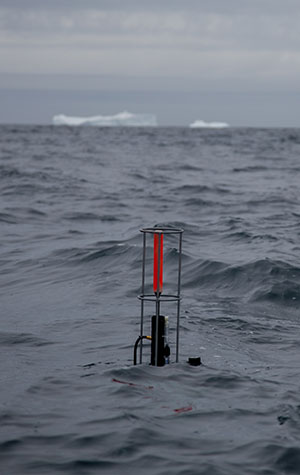Climate change has triggered fundamental modifications of marine biotopes in the Arctic Ocean. A decrease in the extent of ice pack in summer has led to a 20% increase in the pan-Arctic primary production over the last decades and phytoplankton blooms now occur earlier in the year. In some parts, the phytoplankton community is shifting toward smaller species, typical of oligotrophic conditions. Some warm-water species are migrating into the Arctic Ocean. The phytoplankton spring bloom that develops at the ice-edge accounts for much of annual primary production in the Arctic Ocean and is associated with large energy transfer to higher trophic levels and export of carbon to the ocean interior.
How will these bloom dynamics respond to the major changes ongoing in the Arctic?
To study the dynamics of the spring bloom, year-long high-frequency time series of phytoplankton phenology and its drivers are required.

When adapted to navigating in ice-infested waters, BGC Argo floats are a complementary tool to remote sensing and oceanographic cruises, enabling the comprehensive study of ice-edge spring phytoplankton bloom dynamics.
Optimization and testing of the so-called “Pro-ice” floats, manufactured by NKE, were conducted by LOV and TAKUVIK to ensure a safe navigation and a surfacing to be postponed when sea ice is detected.
The GREEN EDGE research project served as programmatic frame for the first ever deployments of the “Pro-ice” floats in Baffin Bay in 2016.
Takuvik and LOV have deployed more than 16 BGC Argo floats so far. They collected an amazing set of data in Baffin Bay consisting of multiple one-year time-series and including whole seasons of under-ice data. This unprecedented data set collected in the Arctic Ocean will enable us to better understand the phenology of phytoplankton in Baffin Bay. The floats are equipped to measure 5 of the 6 BGC core parameters (fluorescence chla, fluorescence CDOM, particle back-scattering, O2, nitrate, radiometry (3 wavelengths + PAR).
A brand-new imaging sensor (the Underwater Vision Profiler, or UVP, designed by LOV) will be implemented on one of the 3 floats to be deployed in Summer 2020 and will provide real time information about particle abundance.
